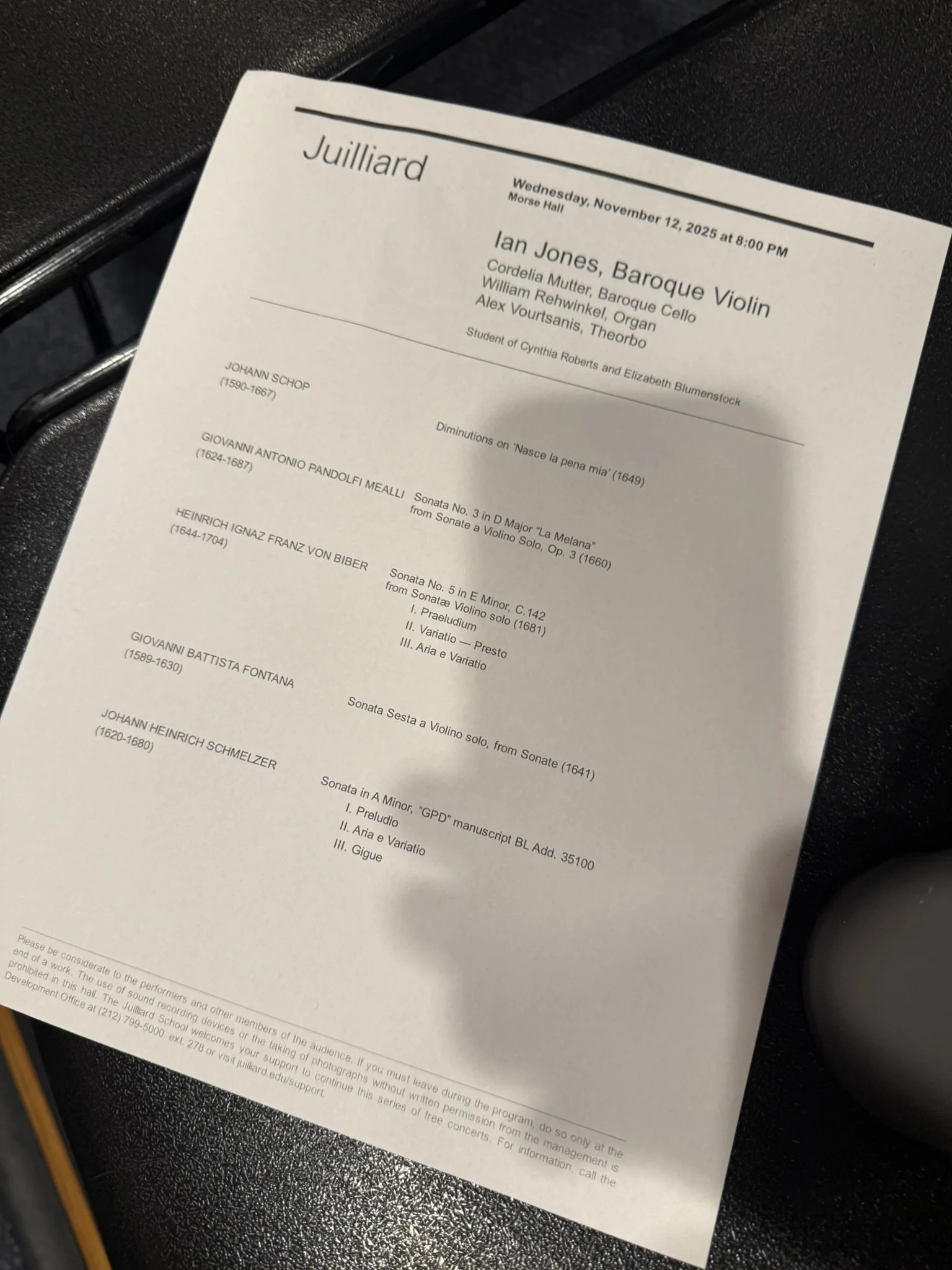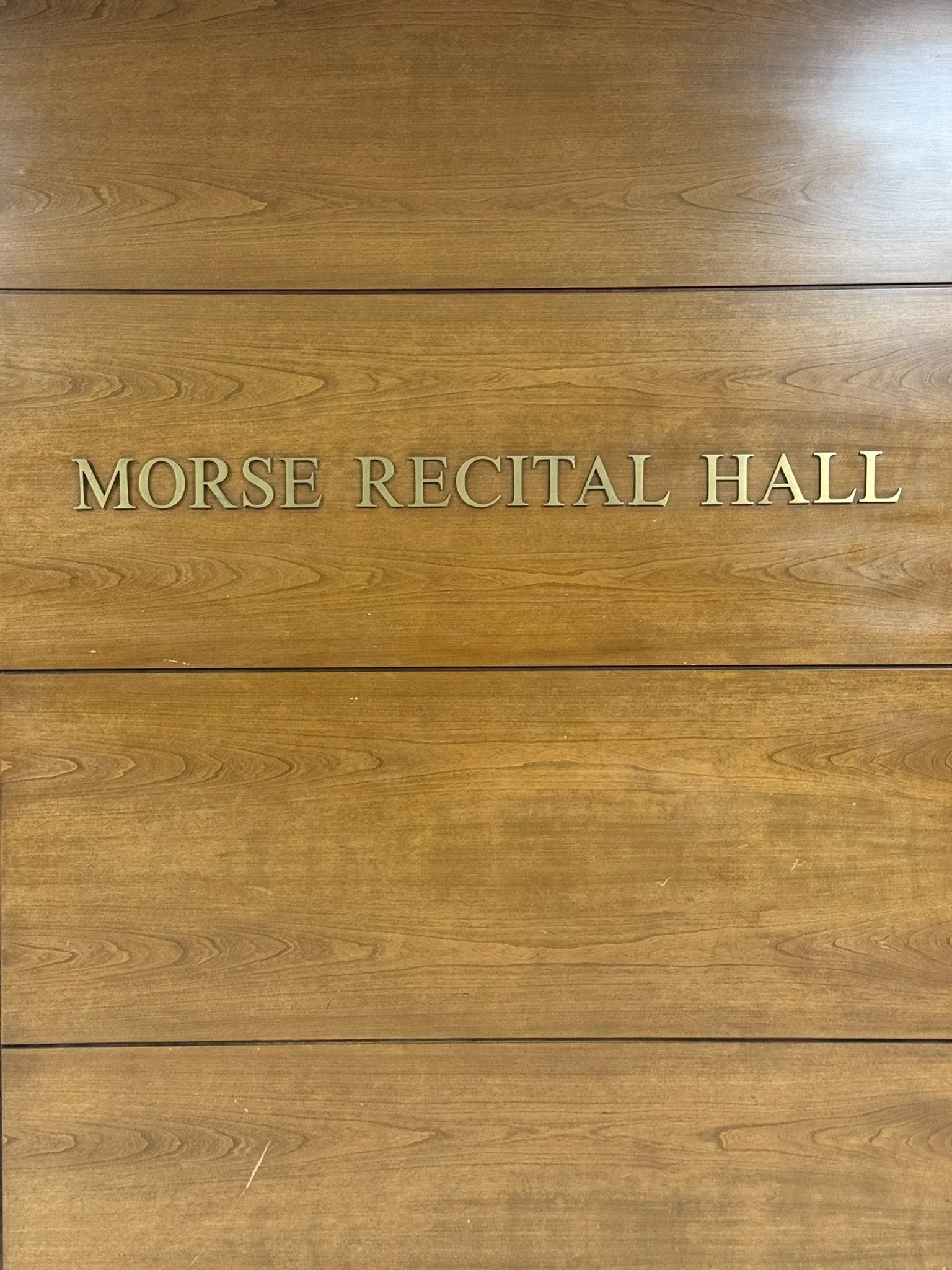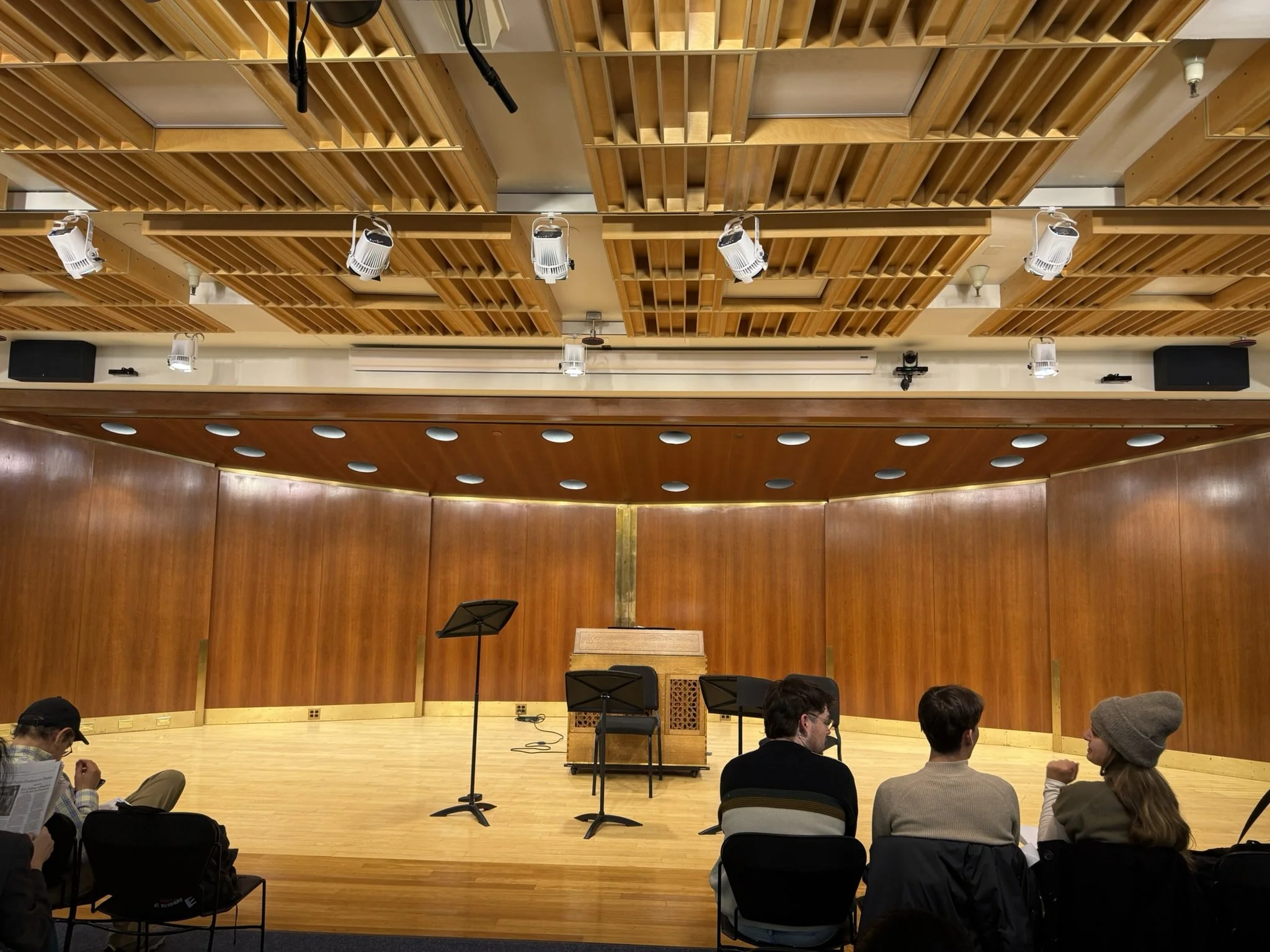Ian Jones performed Baroque violin at Juilliard’s Morse Hall on 11.12.2025. Schop’s 1649 Diminutions use intricate variations; Pandolfi Mealli’s La Melana develops motifs with tempo shifts. Biber’s Sonata No. 5 contrasts silence and richness, while Fontana’s and Schmelzer’s works blend fantasia, cantabile, and technical mastery, showing early violin artistry across Europe.
Johann Schop (1590–1667) was a violinist in Hamburg. His 1649 Diminutions on “Nasce la pena mia” in d employs diminutions, a technique that shortens the length and intervals of notes. The title, “My pain is born,” reflects a style derived from late 16th-century Italian madrigals. Schop applied this technique to scales, double stops, and leaps, creating a unique world of early German violin variations and influencing later composers such as Buxtehude and Bach.
Giovanni Antonio Pandolfi Mealli (c.1620–c.1670), born in Tuscany, served at the Habsburg court. His Sonata No. 3 in D, “La Melana” (circa 1660) begins in a speech, gradually increasing in tempo, and features variations built on short motifs using diminutions.
These two works were composed around the same period but in different places, and their atmospheres are completely distinct.
Heinrich Ignaz Franz von Biber’s Sonata No. 5 in e, C.142 from Sonatæ Violino solo (1681) consists of:
I: Praeludium
II: Variatio – Presto
III: Aria e Variation
Unlike the previous, Biber’s sonata displays the thickness of orchestral texture. It makes clear how much human perception can change depending on place and time, as contrasted between silence and explosion, and the melancholy in it conveys moments of prayer and light. Ian gave a sense of experiencing Biber’s music in its raw.
Giovanni Battista Fontana (c.1589–1630), Sonata Sesta (1630), fantasia, freedom, and the Venetian, with vibrato, agogic nuances, and beautiful cantabile lines.
Johann Heinrich Schmelzer (1620–1680), Sonata in A Minor, “GPD” manuscript BL Add. 35100 (1650–1670), influenced later composers such as Biber. Unlike Biber’s symphonic richness, Schmelzer blends the beauty of 16th-century Italian madrigals, the elegance of Fontana, and the technical mastery of Schop into a whole in a tonality. In Ian’s program, this work crystallized both historical and technical sophistication.
Ian Jones, Baroque Violin
Wednesday, Nov 12, 2025, 8:00PM
Morse Hall
The Juilliard School, 155 W. 65th St., New York, NY 10023
Program
JOHANN SCHOP Diminutions on ‘Nasce la pena mia’ (1649)
GIOVANNI ANTONIO PANDOLFI MEALLI Sonata No. 3 in D Major “La Melana” from Sonate a Violino Solo, Op. 3 (1660)
HEINRICH IGNAZ FRANZ VON BIBER Sonata No. 5 in E Minor, C.142 from Sonatæ Violino solo (1681)
GIOVANNI BATTISTA FONTANA Sonata Sesta a Violino solo, from Sonate (1641)
JOHANN HEINRICH SCHMELZER Sonata in A Minor, “GPD” manuscript BL Add. 35100
*Cordelia Mutter, Baroque Cello
William Rehwinkel, Organ
Alex Vourtsanis, Theorbo
ヨハン・ショップ(1590–1667)はハンブルクのバイオリニスト。1649年の「Nasce la pena mia」のディミニュションは、音の長さや間隔を小さくするという意味で、この生みの苦しみは16世紀末のイタリアのマドリガーレからきている。ショップはこれをスケール、重音、跳躍に応用し、ドイツの初期ヴァイオリン変奏の独自の世界を築き、後のブクステフーデやバッハに影響を与えた。
Giovanni Antonio Pandolfi Mealli, c.1620–c.1670 はトスカーナ出身でハプスブルクに仕えた。ソナタ第3番 in D ラ・メラーナは1660年ごろの作品で、語るようにはじまり、テンポがあがる。短いモチーフのdiminutionを使って変奏。
この2つは同じ時代に別な場所で作られていて、雰囲気が全然ちがう。
HEINRICH IGNAZ FRANZ VON BIBER Sonata No. 5 in E Minor, C.142 from Sonatæ Violino solo (1681)
I: Praeludium
II: Variatio - Presto
III: Aria e Variation
先の2曲と全然違う管弦楽の厚み。人の感覚が場所や時間で随分変わることがよく分かった。沈黙と爆発の対比が見事。
in eの憂愁。祈りや光の瞬間。イアンの演奏は、ビーバーの生の感覚を体験したきがする。なぜなら違う録音よりも抜群にわかりやすかった。
Giovanni Battista Fontana, c.1589–1630
Sonata Sesta 1630
ファンタジア、自由、ベネツィア。ヴィブラートやアゴーギク。美しいカンタービレ。イアンのバイオリンの音色の美しさを一番味わった。
JOHANN HEINRICH SCHMELZER 1620–1680
Sonata in A Minor, “GPD” manuscript BL Add. 35100 1650–1670
後のビーバーに強い影響を与えた、ヨハン・ハインリヒ・シュメルツァー(1620–1680)の「Aマイナー・ソナタ」(“GPD” manuscript BL Add. 35100、1650–1670)は、ビーバーのようなシンフォニーの厚みではなく、イタリア16世紀のマドリガルの美しさ、フォンタナの艶やかさ、そしてショップの高度な技巧が絶妙に融合した、麗しい曲。Aマイナー風情。イアンが取り上げたプログラムで、歴史の風情と技術が結晶した。






